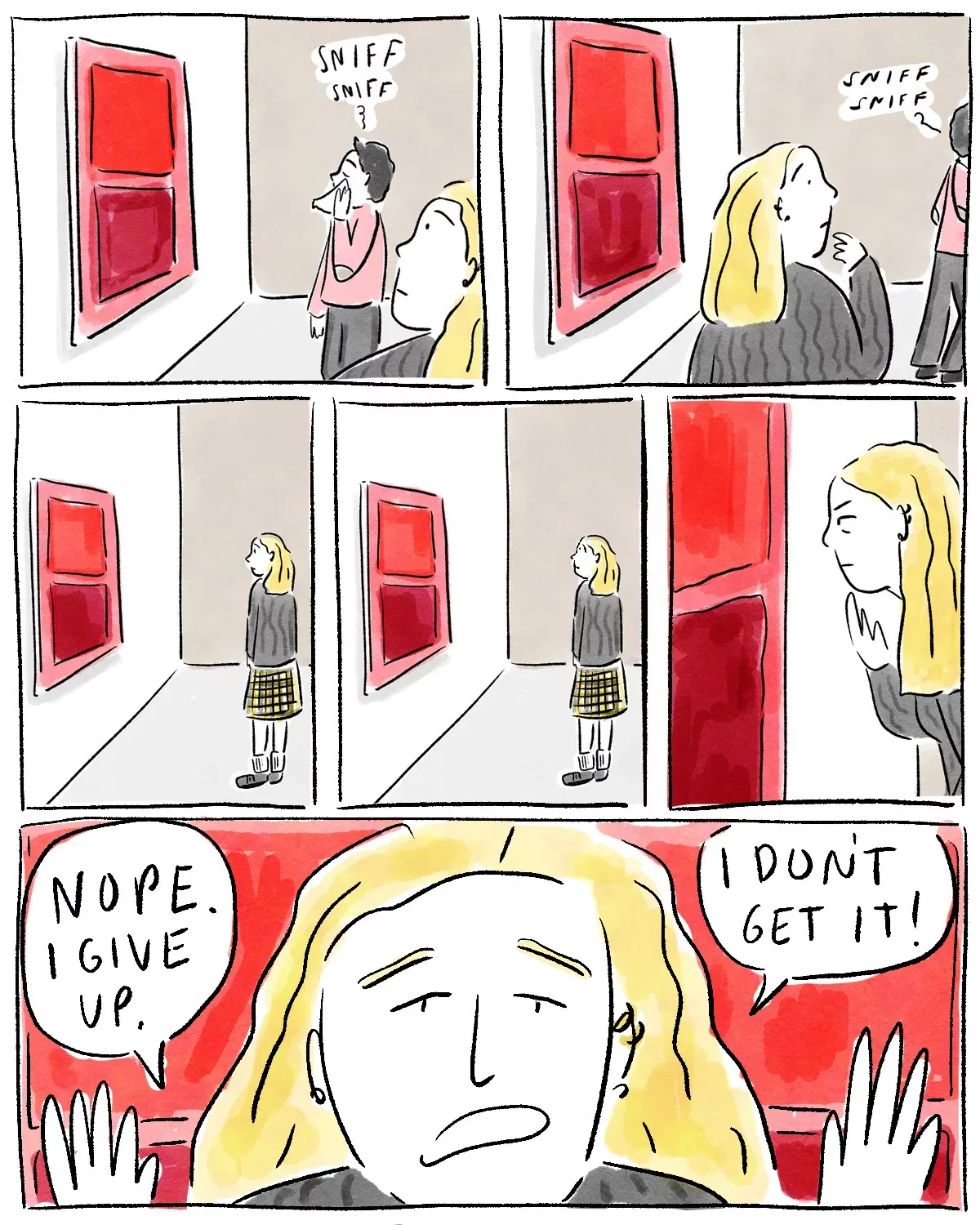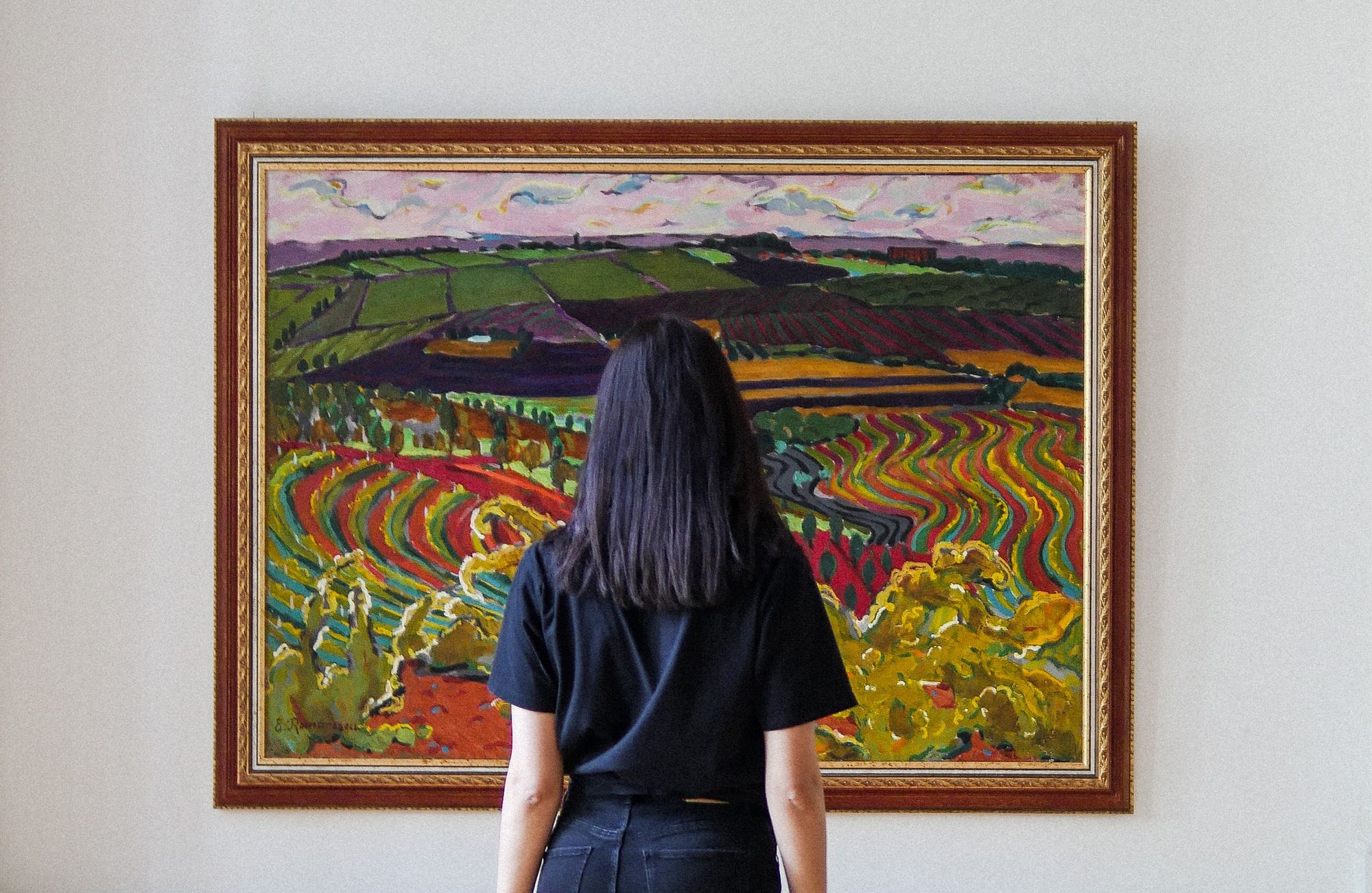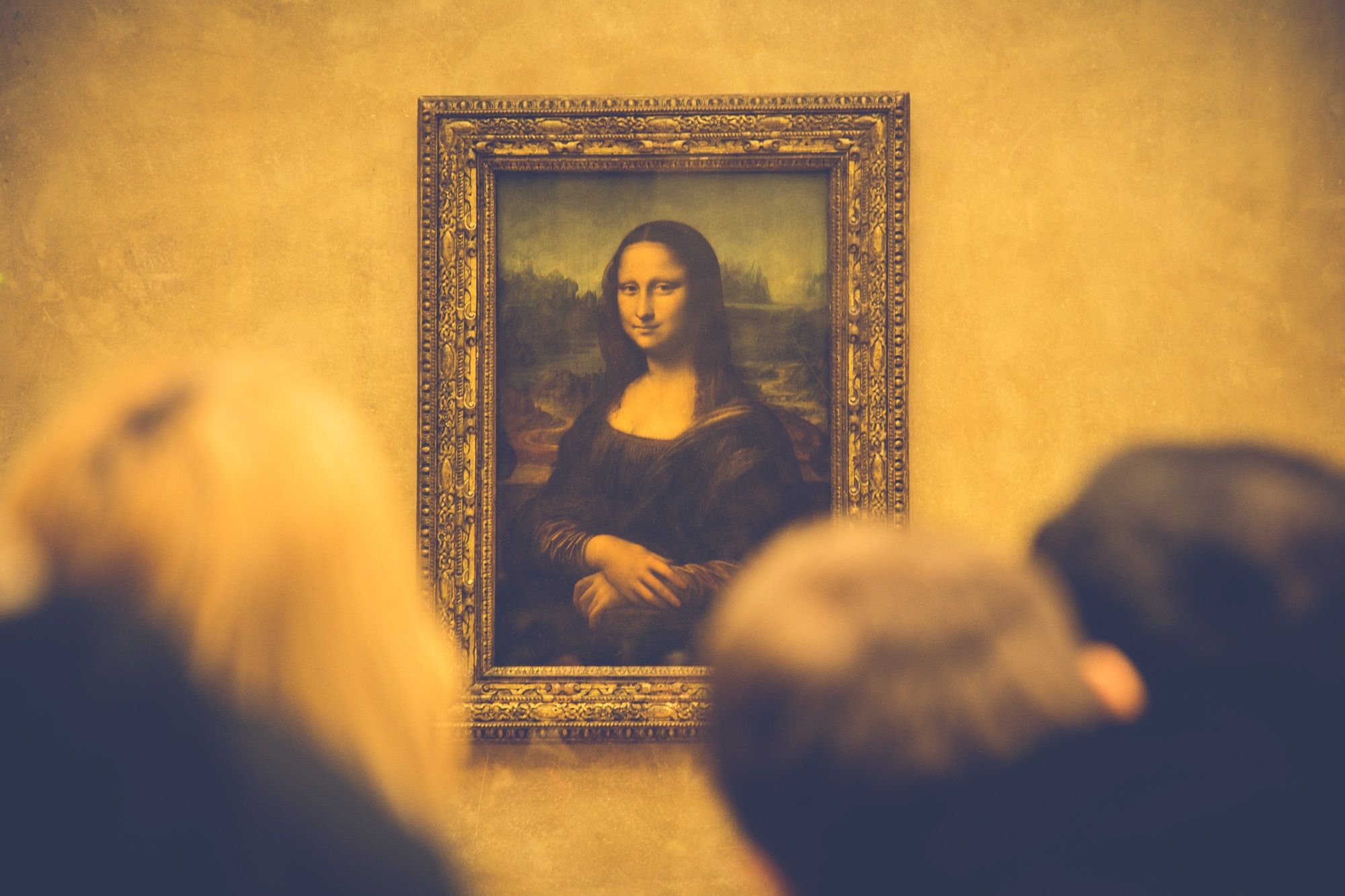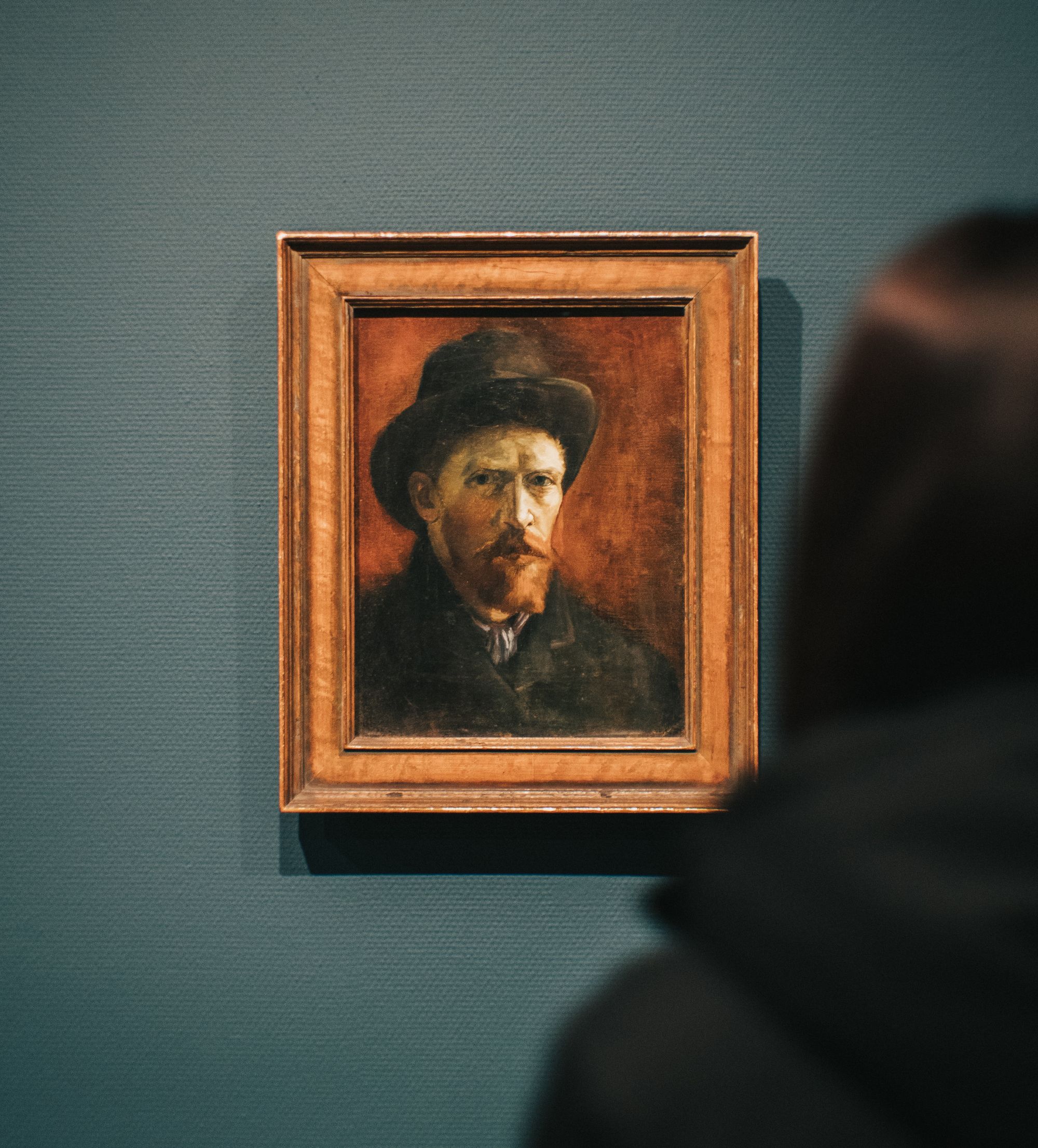
by Meghan Keane
There's something very powerful that happens when people look at the abstract paintings of Mark Rothko, says art historian Susie Hodge.
As they observe his technique and color — perhaps two shades of red fading into each other on a large canvas — people start to "block out the rest of the world. You're focused. And it's just you and this work of art," says Hodge, who has written over 100 books about art, including How Art Can Change Your Life.
Many of us would love to have this kind of deep connection when we look at a painting or sculpture, but how do you do that exactly? Art can feel inaccessible, as if it can only be interpreted by those who know a ton about the subject. And museums can be overwhelming.
Life Kit talks to three art professionals about how to create a meaningful connection when looking at art — and have a museum experience that leaves you feeling revitalized and inspired.
1. Keep an open mind

When you walk into an art museum, try not to have any preconceived notions about what you're about to see, says Hodge.
Some artworks may be surprising, others might be a let down. And that's OK. "So many people have said to me they're disappointed with the size of the Mona Lisa. They expect it to be huge and it's tiny. So some people will be disappointed by that," she says.
And don't let the art intimidate you. "Don't go in and think, 'It's all very heavy, it's art,' " says Hodge. "It can just be fun. It can just be something that tickles my senses and grabs me."
So allow yourself to feel however the art makes you feel, she says. You can love it. You can hate it. You can cry, feel angry or laugh.
Viewing art can have a profound impact on our psyche, says Hodge. Studies have shown that it can lower stress — particularly when people view images of landscapes and seascapes. And it makes us feel good. Another study found that looking at a gorgeous painting or sculpture increased blood flow to the brain by as much as 10% — the equivalent of looking at someone you love.
2. Let the art be a conduit for your own emotions
Even though it may not be what the artist intended, let yourself draw personal connections to the art, says Hodge.
A color, a pattern or flower in a painting, for example, "might trigger something in the deep recesses of your memory or your childhood," she says.
Pay attention to your own emotional landscape too. Did you recently go through a breakup? Did you just get married? Did you start a new job? What's going on in your own life can affect how you view a work, says Hodge.
Recently, she had been writing about a memento mori, an artistic symbol that serves as a reminder of the inevitability of death. After a close friend passed away, she realized that she was "looking at it completely differently today to how I would have looked at it three weeks ago," she says.
These free associations will help elicit an emotional reaction when you look at a work. Let your mind wander and follow your train of thought wherever it leads you. And a deep connection "will happen," says Hodge.
3. Pick a museum that feels relevant to your interests
You can boost your chances of finding an art piece you connect with by going to a museum that interests you, says Jessica Lynne, an art critic and the co-founding editor of ARTS.BLACK, a digital journal of art criticism. If you're interested in climate change, for example, you might pick a museum that's showing artworks inspired by Earth conservation, she says.

This may seem like obvious advice, but whatever reason gets you in the door to a museum is a good reason. If you want to visit Yayoi Kusama's "Infinity Mirrors" installation because it's popular, you think it looks pretty and want to take a photo for Instagram, that's a perfectly valid reason to go and visit, says Lynne.
Wanting to see something beautiful is nothing to be "snuffed at," she adds. "We all have an aesthetic perspective and beauty is so important to how we live and how we make ourselves in the world."
If you want to go to a museum just for the 'gram ... do it. No judgment here.
4. Keep your museum visit short and focused
Once you've picked the place you want to visit, how do you navigate the space and make the most of your time? Art museums can be huge — the National Gallery of Art in Washington, D.C., for example, has over 130,000 paintings, sculptures and artworks. And the Museum of Modern Art in New York has almost 200,000 works.
Hodge says to be realistic about how long you can spend at the museum. You don't need more than an hour or two. After that, it becomes "information overload" and it's hard to stay focused and retain what you've seen.
Next, be strategic about what you want to look at, says PJ Policarpio, a museum educator who works at the Fine Arts Museums of San Francisco helping young people get excited about art.
"Are you looking to look at something new or are you looking to return to an artwork you've already seen and loved?" he says. That can help you decide whether to spend your time exploring a museum's latest exhibit or revisiting an existing collection that calls to you.
Either way, there's no right way to go through an art museum, says Policarpio — so just follow your interests.
5. Really look at the art
Once you're in front of an artwork you like, what should you do?

Get up close and personal. We have the luxury of seeing the real thing at a museum, says Policarpio, so take your time to observe qualities about a work that may not come through on a computer screen. That includes its ...
- Texture: the look and feel of its surface
- Brushstrokes: the marks made by the brush across the surface
- Movement: the path your eyes take when viewing the work
Stand back. Next, he says, take a few steps back, stand in the center — and observe what's happening in the big picture. What's going on in the piece? How are the figures in the piece arranged?
"What are they doing? How are they related? What is the action?" says Policarpio.
Look at it from an angle. Then, Hodge says to try looking at an artwork from its sides, because you might catch something you might not have seen straight on.
"If it's something like 'The Ambassadors' by Holbein at The National Gallery in London, if you stand to the side, you'll see something that from front on looks very different. When you stand to the side, it changes. That's called anamorphic art," she says.
The hidden image in that painting, by the way, is a skull to remind you of your mortality. Imagine if you didn't take the time to look at it from an angle!
Move your body. If you're looking at a painting, you can take a finger to the air and trace the outline of the figure or the movement of the brushstrokes, says Policarpio, who does this exercise with his students at the museum where he works. And when looking at sculptures, try mimicking the poses with your body.
This can help you "see and feel what it might be like to make this artwork" from the artist's perspective, he adds.
Consider the subject of the art. That can have a profound effect on how you feel about the work — and perhaps you can learn something from it. Hodge shares the example of Andrew Wyeth's famous painting, Christina's World, which depicts a girl with a degenerative muscular disorder crawling across a field to get to her home in the distance.
The painting "personifies determination," says Hodge. "And in a way, it can relieve your stress to know that we do have this inner strength."
6. Reflect and appreciate
So how does looking at the composition, the brushstrokes, the color, the subject or the kind of artistic technique help you actually make a personal connection to an artwork?
Policarpio says all this observation can help us more deeply appreciate how artists express their emotions and make sense of the world around them. In turn, it can open up new pathways and possibilities of how we might make sense of these things in our lives too.
"When we look at art and open ourselves to understanding it, we gain a deeper understanding not just of artists, but also different kinds of ways of making and moving," he says.
Get more tips on how to look at art, including how much information to read during an exhibit, by listening to the podcast episode here.
The audio portion of this episode was edited by Clare Marie Schneider. The digital story was edited by Meghan Keane. We'd love to hear from you. Leave us a voicemail at 202-216-9823, or email us at LifeKit@npr.org.
Listen to Life Kit on Apple Podcasts and Spotify, or sign up for our newsletter.
First published in NPR. You can read the article here.
If you liked what you just read and want more of Our Brew, subscribe to get notified. Just enter your email below.


Related Posts
TRAVEL LIGHT by Pete Jimenez
Jun 08, 2024
Anxiety Can Often Be a Drag on Creativity, Upending the Trope of the Tortured Artist
Oct 11, 2023
Arc of an Artist
Jun 29, 2023